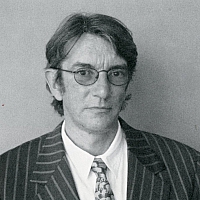
Huis Marseille Keizersgracht 401,The Netherlands 1016 EK Amsterdam Pays-Bas
This winter Huis Marseille's program will revolve around the theme of water. As a counterpart and supplement to the exhibition Document Nederland: Rising Waters, Marnix Goossens photographs Dutch ways to stay dry, Huis Marseille has produced two other presentations under the common title Water in Photography. A small retrospective of water-related photography from the past has been compiled with photographs from the Rijksmuseum's rich collection. In contrast to this 'engineer's outlook', another presentation--involving work from Huis Marseille's collection-- provides a contemporary view of water as a phenomenon and source of inspiration.
Water, as observed by Balthasar Burkhard, Naoya Hatakeyama, Roni Horn, Syoin Kajii and Asako Narahashi
In the photographs of Marnix Goossens and his colleagues, water has a deceptively calm appearance. In tranquil, sometimes austere but also charming landscapes, the constant threat of rising water is implicitly expressed solely in the construction of water works. As a contrast to this view, Huis Marseille will be showing the work of several internationally known artists who have decided to focus on the qualities and countless manifestations of water. This will include works from the collection of Huis Marseille, from the H+F Collection and several special loans from Balthasar Burkhard.
The Swiss photographer Balthasar Burkhard (1944) portrays waterfalls and views of the sea in which the overwhelming force of water becomes visible. Having grown up in the Alps, Burkhard is quite familiar with both the dangerous and the protective aspects of nature in its imposing and emphatically present form. The sharp contrasts of light and shadow, of mass and surface, are brought out in the deep-black and white of his large barite prints. Burkhard is an admirer of the nineteenth-century French painter Gustave Courbet, and as an heir to his romantic eye he seeks a monumental image of landscape. His photographs of waves foaming and churning on the beaches of Normandy also bring to mind the nineteenth-century seascapes of the French photographer Gustave Le Gray.
The Japanese photographers Naoya Hatakeyama (1958) and Asako Narahashi (1959) take a singular photographic stance. For his River Series (1993-1994) Hatakeyama investigates the urban landscape of Tokyo in a vertical direction. He has photographed the canal that runs straight through Tokyo as though it were a river flowing at the bottom of a deep ravine. Because of the canal embankments, the photographs are divided into two distinct parts. Partly due to theatrical lighting, this creates the impression of a stage or film set. Asako Narahashi also makes an unexpected link between land and water in her series Half awake and half asleep in the water (2000-2003). Standing or swimming in the sea, she provides an entirely new perspective on Japan: Mount Fuji emerges from the water; a plane lands on the sea; and the skyscrapers of Tokyo thereby seem rise up out of the water. The title has a twofold connotation: while one can drift about pleasantly in water, there is always a constant sense of danger.
The American artist Roni Horn (1955) and Japanese photographer Syoin Kajii (1976) photograph the different guises that water can assume under varying weather and light conditions. Kajii lives on the Japanese island Sado as a Buddhist monk and, for his series Nami (Wave), has photographed the sea around Sado in panoramas. From its brownish green, almost ripple-free surface to bright blue, foam-crested masses of waves, Kajii registers the forms and structures of the sea. Because of this concentrated view, undoubtedly linked with his background as a Buddhist, the photographs convey a meditative quality. For the past twenty-five years, Roni Horn has been spending regular periods of time in Iceland, where water is a dominant part of the geological make-up. Water is a recurrent theme in her photographic series such as Pooling You (1995) and You are the weather (1994-1996). Huis Marseille will be showing a selection from the series Still Water (1997-1999) which deals with the Thames River. Here she gives constant consideration to the river's surface and thus charts the river as it fluctuates: from dark blue to green and yellow, then golden brown, from seething foam to flowing ripples, from clear to murky, from glistening in the sun to being dismal and dull in the rain. Beneath the photographs she has written the thoughts that she had while observing and photographing. Horn has also published ninety-six photographs of the Thames, without commentary, in her Dictionary of Water. Just as the Eskimos have an infinite number of words to describe snow, Roni Horn shows the endless expressions of water in this work.



